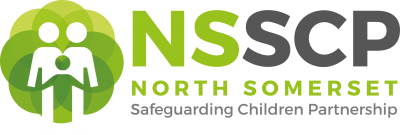“Abuse – a form of maltreatment of a child. Somebody may abuse or neglect a child by inflicting harm, or by failing to act to prevent harm. Harm can include ill treatment that is not physical as well as the impact of witnessing ill treatment of others […] Children may be abused in a family or in an institutional or extra-familial context by those known to them or, more rarely, by others. Abuse can take place wholly online, or technology may be used to facilitate offline abuse. Children may be abused by an adult or adults, or another child or children”
Working Together to Safeguard Children 2023
What child abuse is
Types of abuse
There are four main types of abuse:
- physical abuse
- emotional abuse
- sexual abuse and exploitation
- neglect
Children vulnerable to abuse
Abuse can happen to anyone, and all children and young people must be protected from abuse. Research shows that some children and young people are more vulnerable because they are:
- children with special educational needs and disabilities (SEND)
- children whose parents or carer have alcohol or substance abuse issues
- children in care and care experienced young people
- children who have witnessed or experienced domestic abuse
- children with mental health problems, or a parent with mental health problems
- children living in hard social conditions, such as poverty, isolation, or poor housing
- children with ill health or who have a long-term illness or condition
- children who are at risk of or have a history of abuse or neglect
Children with special educational needs and disabilities can be particularly vulnerable to abuse. They may have impaired capacity to resist or avoid dangerous situations. Speech, language and communication needs can also make it difficult to tell others what is happening.
Having one or more of these characteristics doesn’t automatically mean a child will experience abuse or neglect. Not having any of them is also not a guarantee that a child will never be harmed. It is important to understand risk and vulnerability factors so that extra support can be provided to keep children safe.
Spotting the signs of abuse
The warning signs of abuse and neglect can vary from child to child.
Understanding these signs helps get the right support at the right time. It is important to recognise that a warning sign doesn’t always mean a child is being abused. It is important to remember you can speak to a professional if you are unsure.
If you notice concerning behaviour from a professional who works with children, visit our Reporting concerns about an adult webpage.
People working with or supporting children should be alert to potential indicators of abuse, neglect and exploitation by:
- listening carefully to what children say
- monitoring how children behave
- observing how they communicate including non-verbally (due to age, SEND or other factors)
- understanding the child’s personal experiences including their social environment
- recording and reporting any concerns
Signs of abuse and neglect
- significant or sudden changes in behaviour including unexplained aggression, withdrawal, attachment, anxiety or low mood
- issues with learning including, such as a sudden lack of concentration or refusing to engage in lessons
- frequent absence from education
- regularly late to school and parents late to pick them up
- reluctance to go home after school
- being secretive about how they spend their time and who with including online or on their phones
- knowledge of adult issues inappropriate for their age
- having money for new things which can’t be explained
- mentions being left home alone or with inappropriate carers or strangers
- parents who are dismissive and non-responsive to practitioners’ concerns
- parents who appear drunk or on drugs when picking up their child from school
- having poor hygiene and wearing clothes which are dirty or don’t fit
- regularly tired and hungry
- avoiding physical education, refusing to change in front of others or refusing to wear clothes which don’t cover their body unless for religious reasons
- avoiding specific family members or friends without an obvious reason
- running away, going missing or talking about running away
- being late to reach developmental milestones like speaking or walking without a medical reason
- shying away from touch or flinching at sudden movement
- expressing concern for younger siblings
- drinking alcohol or using substances from an early age including smoking or vaping
These signs don’t necessarily mean that a child is being abused. There could be other things happening in their life which affect their behaviour. If you are unsure, safeguarding professionals can support you to assess the situation.
You may also notice some concerning behaviour from adults who you know have children in their care.
